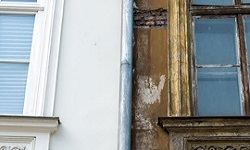Old meets green: New technologies to retrofit buildings in Europe
Stakeholders across Europe know very well how renovating old constructions while keeping up with the EU’s ambitious energy efficiency and CO2 emissions targets is no walk in the park. According to EC estimates, buildings are currently responsible for 40 % of the EU’s energy consumption and 36 % of its CO2 emissions. And whilst zero-energy constructions are now within reach – and will actually be the only type of new buildings allowed after 2020 – razing old buildings to the ground is simply not realistic from a financial, logistical and even cultural heritage point of view. Retrofitting and renovation will therefore be key to reaching EU targets, and the Commission decided in 2009 to begin with government-owned buildings. Each year until 2020, EU countries are required to renovate at least 3% of the total floor area of buildings owned and occupied by their central government, as well as to provide a list of financial measures every three years. In the meantime European institutions are already preparing more stringent targets for 2030 and 2050. This change has two major consequences for the building and construction industry: on one hand, this is a welcome market boost for those businesses who will be quick and innovative enough to adapt. But on the other hand, new technologies and tools to find the best solution depending on each specific scenario are desperately needed. Since 2008 the EU has been investing heavily into the future of the building retrofitting and renovation industry, through the Public Private Partnership on Energy-efficient Buildings (EeB) and its successor under Horizon 2020. This CORDIS Results Pack presents some of the latest breakthroughs enabled by these funding programmes. These projects can be split into two categories: The first consists in platforms and tools to help industry and building owners make crucial choices and define strategies for their retrofitting initiatives, while the second includes efforts to develop, demonstrate and evaluate novel technologies and materials.



